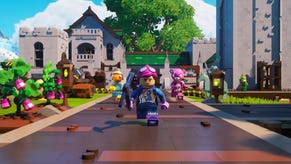Tech Focus: Killzone 3
Digital Foundry goes head-to-head with Guerrilla Games on the technical make-up of its latest shooter
The reason to do pre-rendered cut-scenes was based on a desire to remove any loading screens, any interruption of the experience from the user. We personally found the loading screens in Killzone 2 very jarring and disruptive of the experience.
We didn't actually change anything to the rendering process, the cut-scenes are rendered in native 720p with the Killzone rendering and exhibit the exact same quality as the game. We could have cheated and oversampled them or done something else to make them look fancy, but it would defeat the purpose - people would notice and it'd drag them out of the game.
Because we have the entire game streaming in data while we're showing the movies; we have to be very light on CPU usage and we have only very little memory to spare. Often games play movies when there are no game assets loaded, we play movies when all of the assets are loaded. The more popular H.264 profiles require large buffer sizes, to deal with VBR or for reference frames. To use H.264 we'd have to drop down to a simpler profile and probably write a player which is optimised for our particular use, instead of quality and speed.
In the end, Bink fares pretty well compared to other codecs when they're starved on memory and it was easy for us to integrate. That said, it's not something we feel precious about; anything that looks good, runs with little memory and is fast will do for us. I'm a bit tempted to write a special h.264 derivative, or maybe invent something brand new...
There was little negotiation involved. When you need it, you need it. I think we were asked what our format was at some point and that was it.
I don't think we'll be creating a brand new engine for this gen, we're pretty close to what you can achieve in this particular direction, although there's always room for improvement.
When the Move was first presented to us it was still in early prototyping stages. There was a desire, but not a big push, for us to support it. We're always interested in new developments, so we were quite keen to see if it would work for us.
To our surprise, our early tests were unexpectedly positive - our experienced Killzone players could actually play the game and almost enjoy it with a basic prototype. The precision of the Move helped a lot in that respect. When we made the decision to research further, one of our programmers took the project to heart and tried to make the best motion controls we possibly could. We found out that - like with 3D - there are a lot of false assumptions and expectations and you really have to try a lot for yourself.
After each experiment we playtested the game, both on our own testers and team members, as well on different people off the streets. We experimented with gestures, aiming and moving mechanics, aim assist and direct controls until we got to the point where a lot of people preferred playing with the Move!
Yes. They are. We're always on the lookout for things which will make the experience more immersive than the previous.
I don't think we'll be creating a brand new engine for this gen, we're pretty close to what you can achieve in this particular direction, although there's always room for improvement. That doesn't say we can't do anything really fresh, we're going to be doing more than just Killzone in future and new ideas lead to new techniques and fresh experiences.






.jpeg?width=291&height=164&fit=crop&quality=80&format=jpg&auto=webp)

